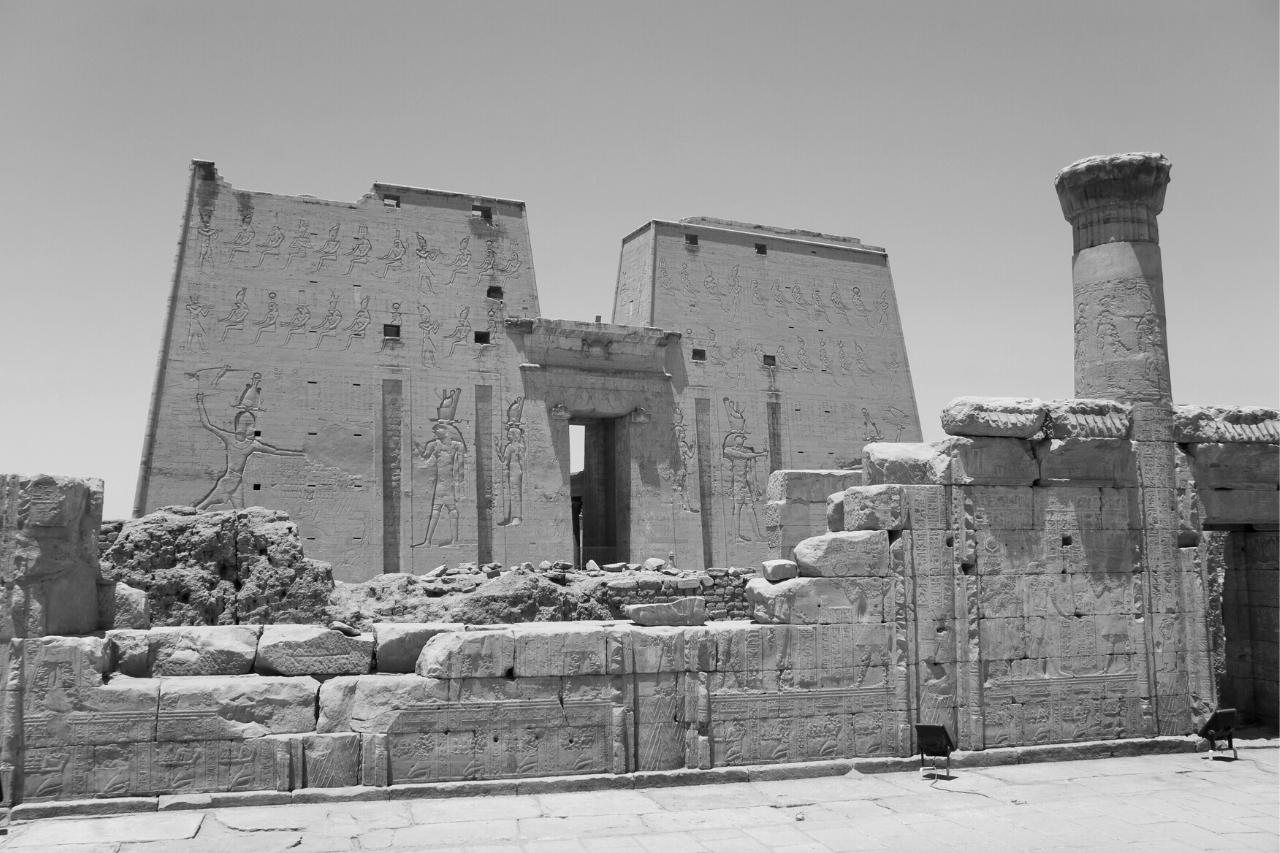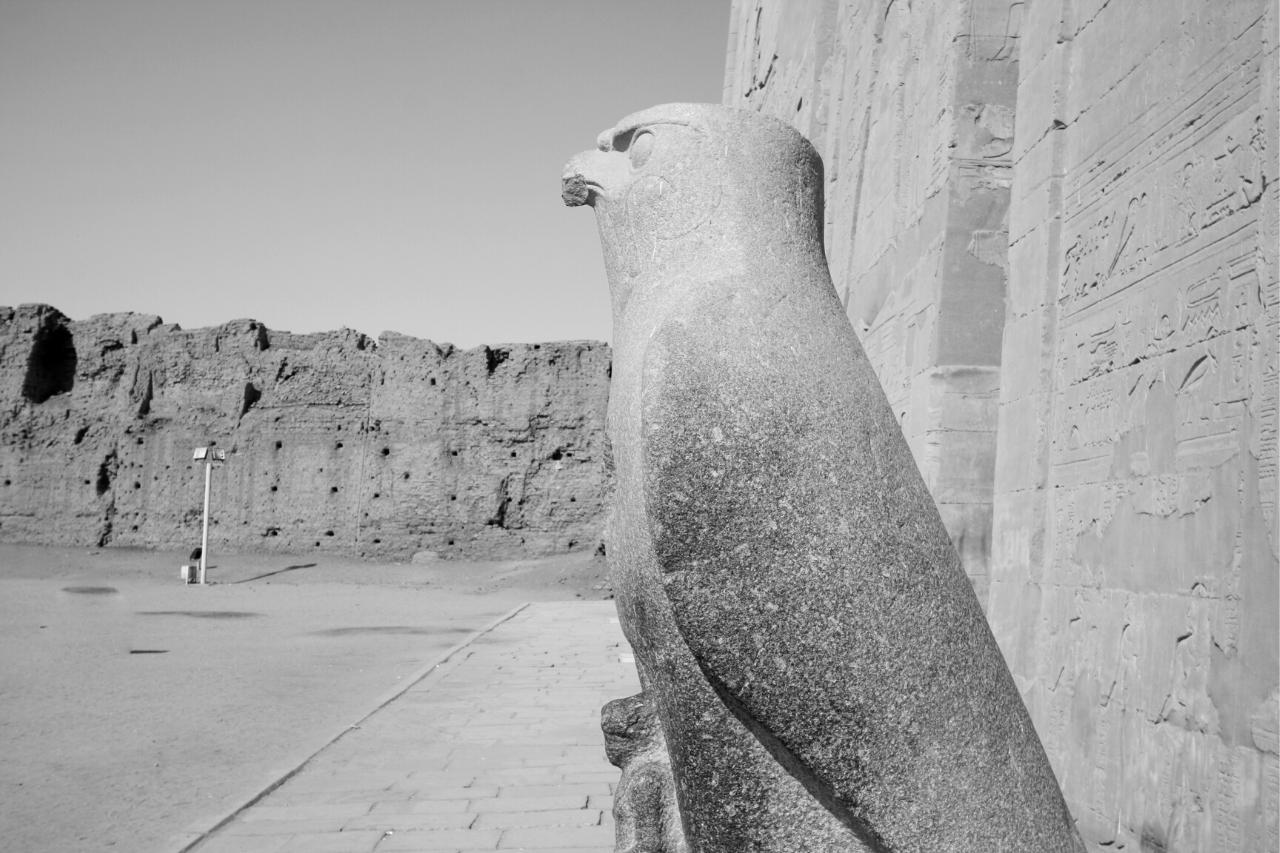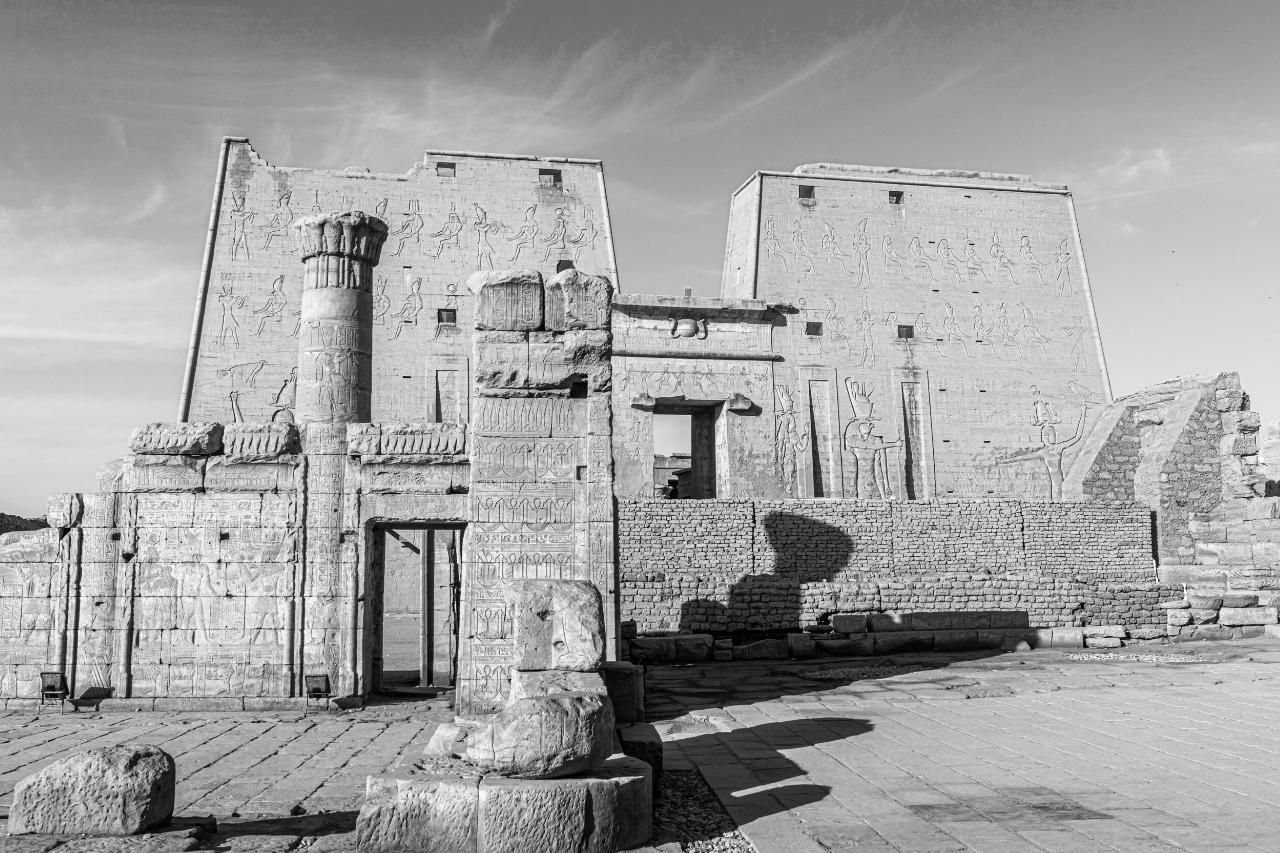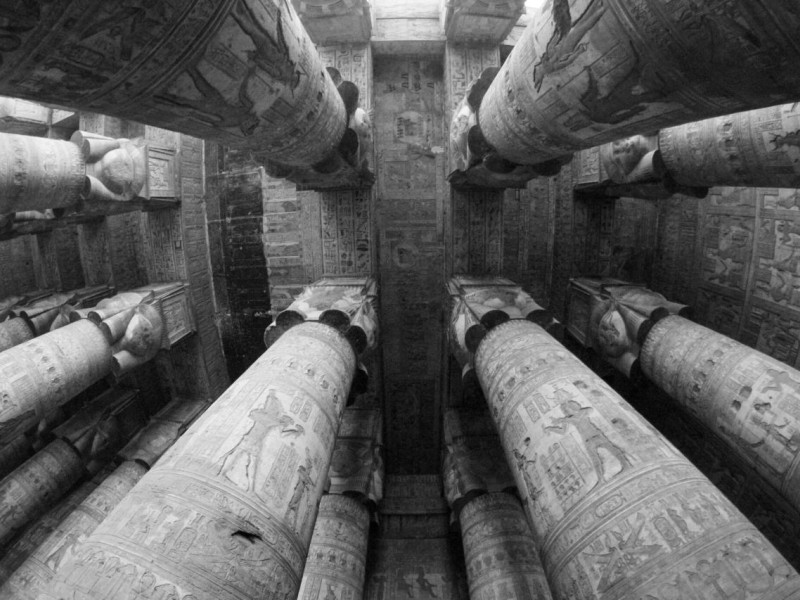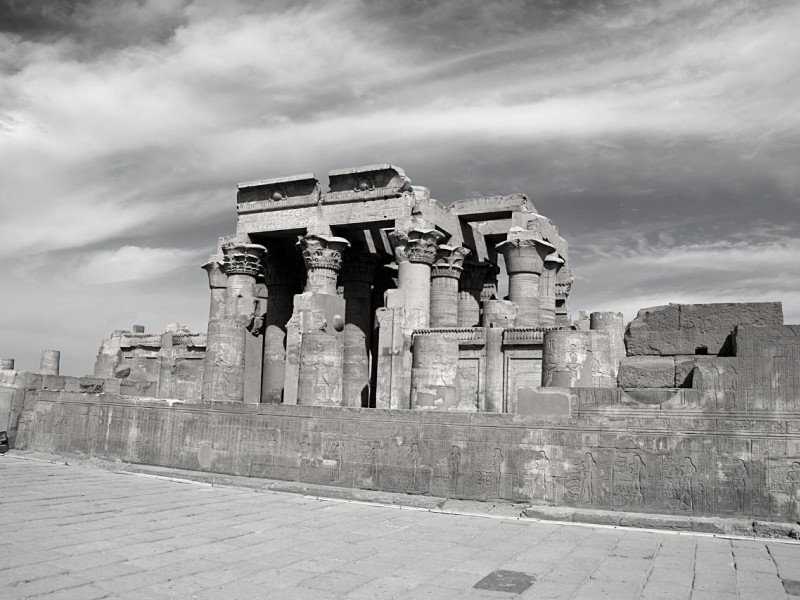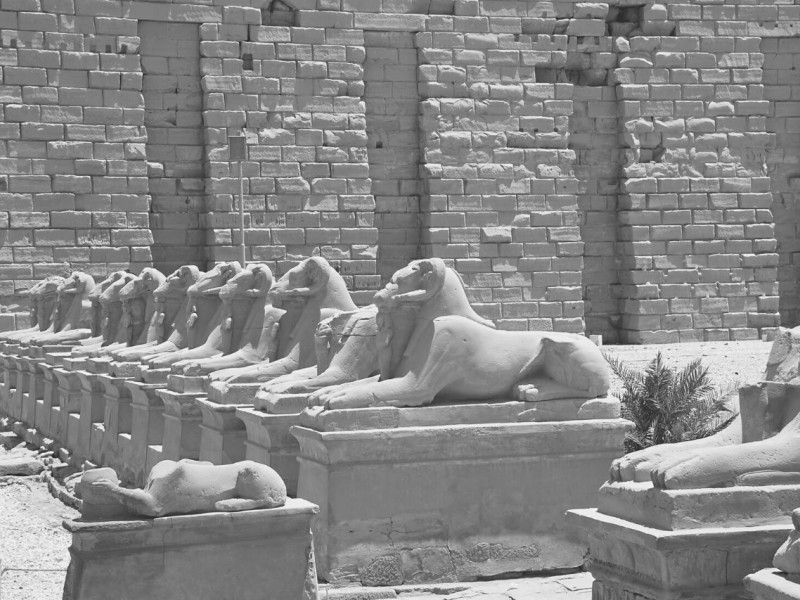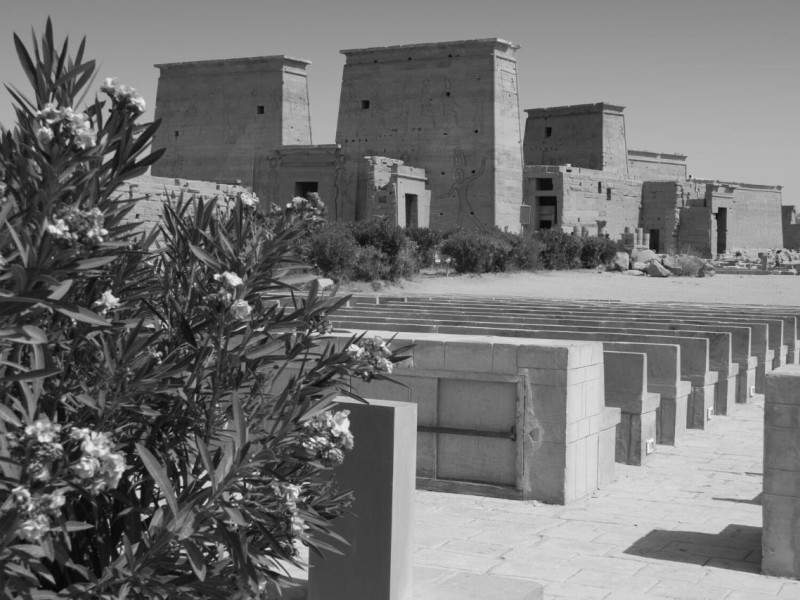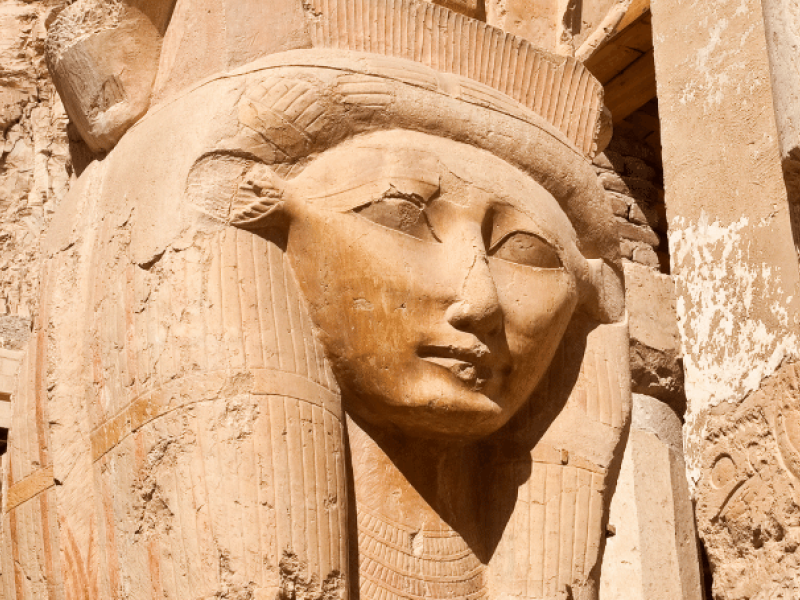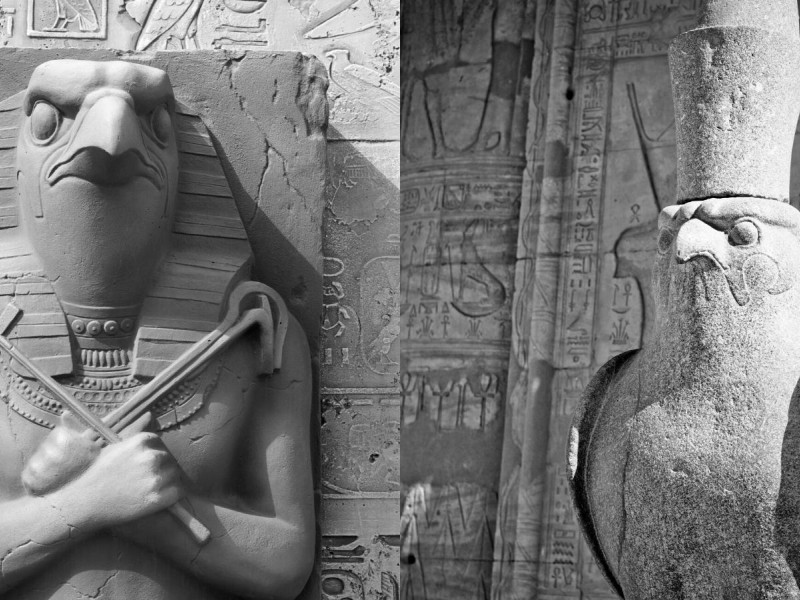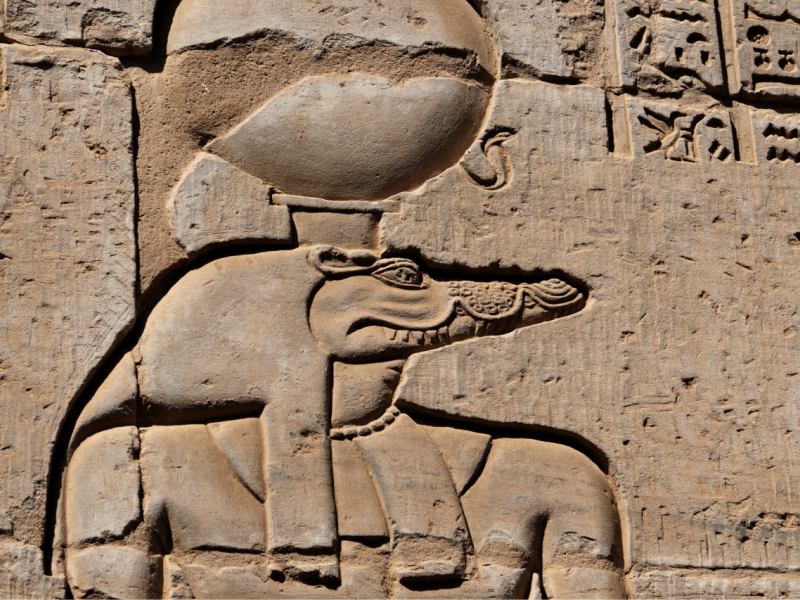Temple of Horus: The Ancient Place of Love and Praise
The Temple of Horus is a temple located in Edfu City, Egypt, that was built to honor the ancient Egyptian god Horus.
The Edfu temple is one of the most well-preserved temples in Egypt and is also one of the largest.
In this article, we bring you all the information about the origin of the God Horus, his characteristics, and why people worshipped him.
Temple of Edfu
The Temple of Horus at Edfu is the temple that was built in the name of Horus, the ancient Egyptian god. His Greek identity is said to be Apollo. Horus was an important god in the ancient Egyptian civilization, hence the extravagant temple.
Edfu is a city on the west bank of the Nile River in Egypt. Edfu, Idfu or Edfau are the names of the same ancient city known as Tell Edfu.
This city was of prime importance because 3 miles away from Edfu are the remains of some ancient pyramids. Tell Edfu, like many other ancient cities, was reduced to Edfu and retained its status as a city because of the presence of the Temple of Edfu.
Temple of Horus
Horus, the sky god, the son of Osiris and Isis and the destroyer of Seth, was praised for his bravery and powers. People prayed, sacrificed and bowed before him. Around 237 and 57 B.C.E, the people of Edfu built the temple of Horus. Edfu was the city of Horus, where they believed he liked to stay.
The Horus temple went through many natural disasters since its time. It is an extravagant piece of architecture in the middle of a city and is open to the public.
Discovery
The temple was built to praise Horus, the sky god. To match his extravagance, the building was made with a lot of materials and architectural intellect.
The temple, however, was buried under sand many times. It was recently excavated in the mid 19th century by Auguste Mariette, who was the archaeologist who started the work on excavating this great temple.
The temple was rumored to be buried under sand after the pagans of the cult were banned from entering and performing any rituals inside the temple by the government. According to some natives, the pagans of the cult of Horus cast a spell to hide the temple from sight if they were not allowed to use it for praising Horus in these modern times.
The temple of Horus in Edfu, since then, has been rediscovered and restored to its original status.
Characteristics
As the temple was buried under sand for quite a while, a lot of the original artwork and structures had deteriorated. Also, at some point in time, the temple was filled with exquisite pieces of artwork that have all been long gone, nowhere to be found. Unfortunately, pagans or looters probably swiped the temple clean.
The roof of the temple stands tall and the entrance is as grand as one can imagine. Its architecture resembles that of the characteristic ancient Egyptian design with high ceilings and pillars around the main building.
One might stand in awe after seeing the temple because of how huge it looks and actually is. To believe that the Egyptians went this far to build something is amazing, but then again, they were also the ones who built the great pyramids.
Inside the sanctuary, some remnants of ancient Egyptian life can be found on the walls. It is not in the best of state but the modern preservation team has done a great job in bringing the ruined artifact back to life.
Religious Significance
The temple of Horus was a great place of religious importance for the ancient Egyptian people. During that time, the people were into worshipping statues of gods and the concept of monotheism was unknown. With the advent of religions like Islam and Christianity in the area, the people eventually shifted away from their old gods and goddesses.
Even today, the people who follow Horus and believe in his supremacy visit the temple for guidance and love. However, among them, there are still some sinister cults that misuse the ancient Egyptian culture and try to create unrest and chaos among the people.
Tourism and the Temple of Horus
The Egyptian preservatory authorities and government have done an excellent job in creating revenue from this old temple. After its rediscovery in the 19th century, the Egyptian government restored it and opened it to the public. Tourists from around the world are welcome to visit this magnificent temple.
To increase its attraction, the people of Edfu have opened markets along the temple. The temple’s entrance is a long passageway with shops on either side.
This boosted the economy of Edfu, benefiting the natives greatly. Now that most of the population of Egypt is either Muslim or Christian, the temple only serves as a tourist site.
The temple of Horus most famously became the temple of Edfu because of its importance to the people of Edfu. Whenever someone mentions the city of Edfu, the temple of Horus immediately comes to mind.
History
Let us look at the start of this civilization to learn everything about the ancient Egyptian deity Horus.
Ancient Egyptian Civilization
The ancient Egyptian civilization is one of the oldest civilizations in the world. The civilization started when different people came and started living beside the banks of the Nile river.
During that time, the river was the source of unlimited water, which was a great blessing for the people. With the passing of time, more and more people inhabited the banks and a community grew among them.
From that community came leaders who united the tribes and laid the foundations for a civilization that would be the face of humanity. The Egyptians have been given the credit of blessing human civilization with many important objects used for our day-to-day lives today. They also brought forth the art of writing, reading and storytelling.
Ancient Egyptian Religion
The ancient Egyptian people were very religious. They started with different local gods and goddesses from individual cities in predynastic Egypt, but once they settled in and Egypt became unified, they followed Atum and his created gods. Atum was known to have created himself. After him, the universe came into being and the other gods were created.
The religion that the ancient Egyptians followed was based on polytheism. There were many gods and goddesses of the Egyptian Pantheon who were worshipped and loved. The people made sacrifices and also praised them inside their temples. They lived their life according to their religion and they did this wholeheartedly.
The religion of the Egyptians grew exponentially with time, with more and more people following Osiris and Atum. Because of this, many temples were erected in the region. These temples were built by people to show their love and praise for the gods.
Egyptian Gods and Goddesses
There are countless Egyptian gods and goddesses. According to historians, this is because each Egyptian household had its own gods and goddesses. Despite that, there were some deities who were deemed supreme over all other deities. There are 11 gods and goddesses who were known to be the most important in the Egyptian religion.
These 11 gods include Osiris, Isis, Horus, Seth, Ptah, Anubis, Thoth, Ra, Hathor, Bastet and Amon. These gods and goddesses were famous in all of Egypt and were worshipped heavily. Osiris was in charge of the whole universe and its people, and Isis was his sibling and partner. Like Osiris, each god was equipped with power that he used to keep the world in order somehow.
This pantheon of gods was famous for their fights, love, revenge and other human-like emotions that made them closer to the people. People looked up to them for guidance and also believed in their supremacy. It would be hard to name the most famous god from among the pantheon, but surely Horus was one of them.
Horus: Origin
Each Egyptian god had a specific power or characteristic that made him stand out from the rest of the gods. With that being said, Horus was the god with the falcon head. He was one of the most beloved gods of his time. During most of ancient Egypt's history, the reigning King was known to be a manifestation of Horus and was therefore loved and praised throughout the kingdom.
Horus was the son of Osiris and Isis. It would not be wrong to say that his birth is one of the most dramatic and important tales in Egyptian culture and religion. The legend of Osiris’ death and Horus’ birth is known as the Osiris Myth, and it is as follows:
Osiris Myth
Osiris and Isis were the power couple that ruled the universe; they were loved by other gods and the people, and no one could compare to them. They were born to Geb and Nut, who had a total of four children: Osiris, Isis, Nephthys and Seth.
Osiris married Isis and Seth married Nephthys. Among them, Osiris and Isis received more love and praise from the people and the other gods.
Seth was always jealous of Osiris and planned on destroying him. His wife and sister, Nephthys, lured Osiris and seduced him into sleeping with her. Knowing this gave Seth a valid reason to kill Osiris, so he did. The council could not find fault with him and Osiris’ body was dismembered and thrown into the Nile river.
Isis knew her husband would not do anything of this sort unless he was under a spell. Nephthys later told Isis what had happened and that she is now pregnant with Osiris’ child. Isis asked Nephthys’ help to bring Osiris back, and the latter agreed. They were able to bring Osiris back, but to the underworld instead of the real world.
Conceiving Horus
After Osiris was resurrected, Nephthys went into hiding because if Seth found out about Nephthys being pregnant with Osiris’ child, he would kill both of them. Isis, on the other hand, wanted revenge. She forgave Nephthys and went on to live in a hidden place where she magically conceived Osiris’ child, Horus.
She stayed in a cave that was protected by spiders and snakes, only going out to fetch water and something to eat. She wanted Seth to burn as she burned after the death of her beloved husband. She went into labor alone and gave birth to a healthy boy, naming him Horus.
Horus was going to avenge his father’s death. He would go on to fight and destroy Seth many times in battle and take the throne for himself. With this, he became one of the most cherished and beloved deities in Egyptian culture and religion.
Horus: Characteristics
As each god had a set of unique characteristics, Horus also had extraordinary powers. Horus, Heru, Har or Hor was the god of the sky. He controlled the sky in all means and forms. Egyptians believed that the right eye of Horus was the Sun and the left eye was the moon, and because Horus was associated with the falcon, he could fly in the sky and never get tired.
The other characteristic of Horus is his ability for exceptional warfare. He fought Seth many times in battle and won. He was brave and strong, and it is said that nothing could stand in his way because he would devour all of his opponents.
In the ancient times, every new king was thought to be a manifestation of Horus. This was because Horus took the throne from Seth and became the ultimate ruler after Seth had taken it from Osiris.
Conclusion
This was a comprehensive history of the temple of Horus, the sky god of the ancient Egyptians. Here is a recap of what we learned from the article above:
The Temple of Horus is located in Edfu.
The temple was built as a worshipping place for the sky god, Horus.
The temple is now a tourist destination and is visited by a large number of people.
The temple was rediscovered in the mid-19th century by Auguste Mariette.
Horus was the son of Osiris and Isis.
He was conceived under magical circumstances to avenge the murder of his father, Osiris.
The temple of Edfu is a testament to what people are capable of. It is a true masterpiece in terms of architecture and lives on as an important part of history.
Now that you know everything about the valley of the queens and its secrets, why not pay it a visit?
